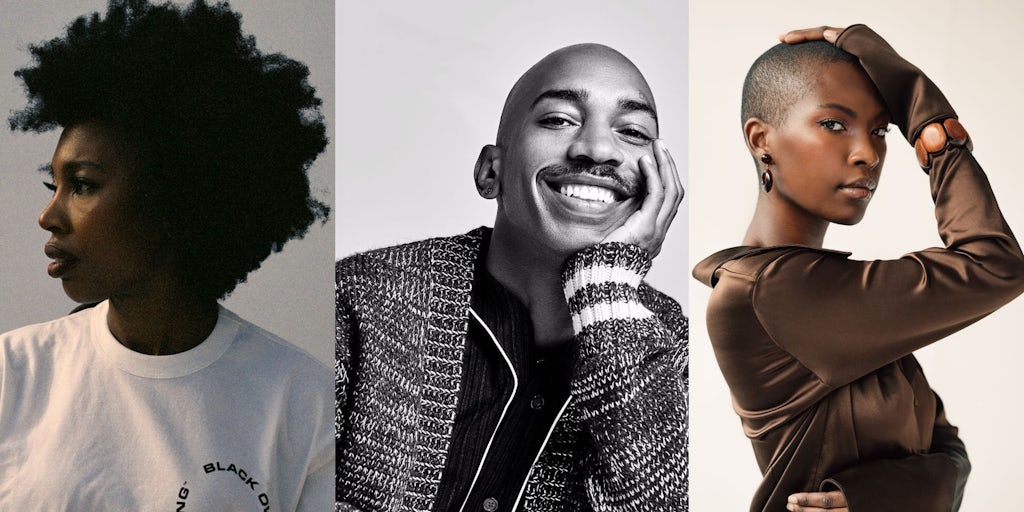Zegna Aims to Open 50 Tom Ford Retail Stores, Double Group Margins
Women are the key to growing the Tom Ford brand, Zegna executives said Tuesday at the Italian luxury group’s investor day in New York.
The category currently represents just 30 percent of sales at the brand, and Zegna sees potential in expanding Tom Ford’s accessories offer, which makes up just 10 percent of womenswear sales. Selling more shoes and accessories and less top-priced eveningwear would likely be a boon for the label’s margins — as well as help it broaden its relevance among shoppers who look to luxury brands for items they can wear often.
Zegna’s event marked the first time the company has revealed plans for its Tom Ford unit after taking over fashion operations for the label earlier this year in a deal with cosmetics giant Estée Lauder Companies, which purchased Tom Ford for $2.8 billion in late 2022.
Chairman Gildo Zegna and Tom Ford CEO Lelio Gavazza repeated that their long-term vision was for the label to become “one of the 10 most important global fashion brands.” It’s a lofty, even grandiose, objective for a brand which reported fashion revenue of €139 million ($149.8 million) in its first 5 months under Zegna’s stewardship. That’s compared to €3.3 billion in annual sales at Saint Laurent or €10 billion at Gucci — both houses where Ford designed before launching his namesake label.
But Zegna sees high potential for taking Tom Ford’s slick brand codes and new designer Peter Hawking’s well-received runway vision, and plugging them into Zegna’s integrated supply chain. The company controls production for its menswear business from sheep farms to fabric mills and factories.
The reveal of these ambitions comes as the Italian menswear specialist pursues its newfound momentum as a multi-brand, listed fashion company. After embarking on a careful brand reinvention over the past half-decade, now Zegna is seeking to leverage its manufacturing savvy to grow its acquisitions without compromising quality.
“To be an aggregator of luxury, that is the power of this group,” chairman Gildo Zegna said.
:quality(70)/cloudfront-eu-central-1.images.arcpublishing.com/businessoffashion/YDY7TY3GQFGWNOK6BVBHFUIGJM.jpg)
A Company Transformed
Ermenegildo Zegna, a knitwear and tailoring specialist which was founded in 1910, has transformed its profile in recent years: going from a somewhat stodgy, privately held, men’s formalwear house to a listed, multi-brand player.
After purchasing Thom Browne at a $500 million valuation in 2018, Zegna set about rejuvenating its own namesake line: phasing out the less-expensive “Z Zegna” sub-brand, dropping “Ermenegildo” from its branding, and remerchandising its stores with a focus on sneakers and elevated casualwear staples like chore jackets and five-pocket trousers.
The revamped strategy has succeeded in attracting new, younger consumers: the Zegna brand has seen its average customer’s age decline by 7 years since 2019, the company said Tuesday.
Other recent developments at Zegna include going public in the US in late 2021, followed by the Tom Ford deal with Estée Lauder in April. Zegna had previously held the license to manufacture and distribute only Tom Ford menswear before forging a broader agreement with Estée Lauder amid the namesake designer’s retirement earlier this year.
:quality(70)/cloudfront-eu-central-1.images.arcpublishing.com/businessoffashion/MHFBFYAJ3BDZHCFDNHUUIW27AA.jpg)
Retail Expansion
Now that Zegna has revamped its namesake brand and built up its group, it’s turning its attention to growth. There, it sees plenty of potential. Tom Ford, for example, may have small sales compared to luxury megabrands, the brand’s awareness is buoyed by its much larger beauty division: the Estée Lauder-owned unit is expected to reach around $1 billion in sales of perfume and makeup in the next few years.
“This brand is much bigger than its business,” Zegna said. “It’s so powerful. Now we have to add pieces to it, and execute.”
Expanding the brand’s geographic footprint is the first order of business, as Tom Ford currently has 51 directly-operated locations across just nine countries. Gavazza said the group would roughly double that number over the next few years to over 100 stores.
Zegna also plans to open additional retail locations for the group’s flagship brand — which is in the process of buying back its South Korean business from a local partner — and American designer label Thom Browne. With those storefronts, the group plans to increase overall store count to roughly 500 locations in the next few years, up from 384 stores today.
Thom Browne
Driving growth through directly-operating stores and limiting wholesale is also a focus for Thom Browne. After using its iconic suiting, striped-ribbon motifs and savvy fashion week spectacles to drive broad brand awareness and recognisability, the 20-year-old brand now needs to “convert the brand awareness to product awareness,” CEO Roger Bazan said.
“We have all kinds of products; we need to better explain the kinds of products we have,” Bazan said, laying out a plan to balance its robust trade with high-spending brand fanatics with building wider awareness among younger, more aspirational customers.
“People think of us as extremely expensive, probably because of [the reputation for] quality … It’s not that expensive,” Bazan said.
Thom Browne sells $3,300 dollar suits, $550 cotton sweaters and $175 dollar beanies. Eyeglasses start at $470, while a swim goggle-inspired titanium pair from the brand’s Paris couture show in July are priced at $3,000.
Zegna hopes to grow direct-to-consumer sales at Thom Browne by a high-teens percentage annually in the coming years.
:quality(70)/cloudfront-eu-central-1.images.arcpublishing.com/businessoffashion/TXJ3C67W4ZF6JBEBMMNT2OOUQQ.jpg)
Ahead of Targets
As many luxury brands struggled to navigate slowing demand this year, Zegna forecast full-year revenue growth above 25 percent. It forecasts average growth above 10 percent per year in the mid-term. It also hopes to double its profitability from an adjusted EBITDA margin of 10 percent last year to 20 percent within the next few years.
Zegna Group is ahead of schedule on reaching previous mid-term targets announced in 2022, including €2 billion in annual revenue and an EBITDA margin above 15 percent (excluding Tom Ford), Zegna said. That success encouraged the move to announce new ambitions.
While forecasting slower growth in the coming years, Zegna said he remains “confident” in the group’s ability to surf two parallel trends: continued casualisation in the luxury market, alongside the return of more dressed-up options that suffered during the pandemic.
“Casualisation in luxury will keep gaining momentum regardless of where the world goes, even as the eveningwear strengthens. People go out and want to enjoy themselves again on social occasions. We have the opportunity to work on both opportunities at each of our brands,” chairman Gildo Zegna said.
Alongside its plans for Tom Ford opportunity, the group announced that the Zegna brand hoped to propel increases in store traffic (particularly among young consumers) by leveraging casual items like its Triple S sneakers. The brand can then encourage those new clients (who can afford it) to grow with the brand, moving up to its traditional core products like cashmere knitwear and suits.
After gradually trimming its wholesale exposure to 16 percent of sales last year, Zegna pledged to ratchet the channel to just 10 percent of sales mid-term. Many luxury brands have aimed to boost margins and burnish their brand perception by cracking down on third-retailers, whose discounting practices are hard to monitor and control.
Editors’ Note: This story has been modified on 6th December 2023 at 9:20 BST. A previous version stated that Tom Ford’s 12-months revenue through September 2023 was 139 million euros. That is incorrect. Tom Ford reported 139 million euros in revenue for the 5 months through September (starting with Zegna’s acquisition).

:quality(70)/cloudfront-eu-central-1.images.arcpublishing.com/businessoffashion/NF5BZDT5PNAIPPSVTIEUDI2YYI.jpg)



